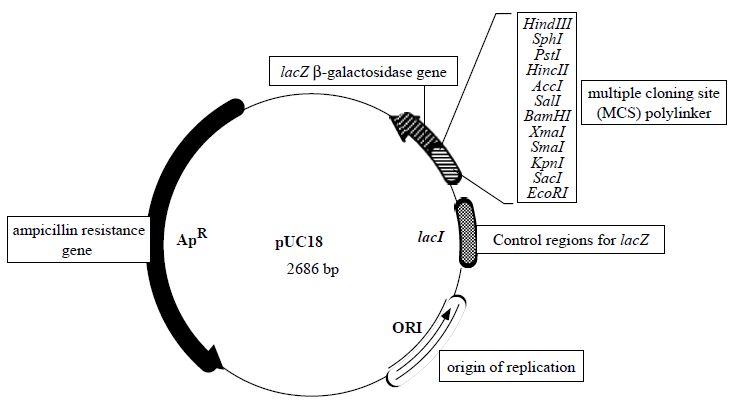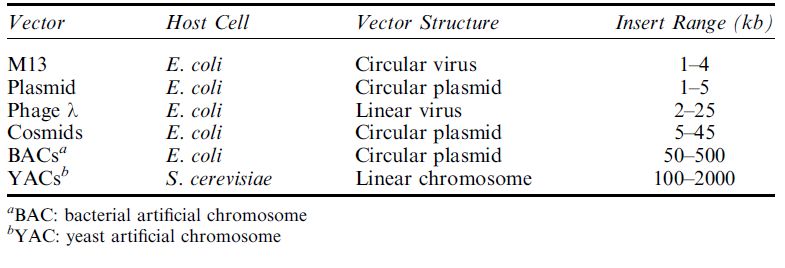


 النبات
النبات
 الحيوان
الحيوان
 الأحياء المجهرية
الأحياء المجهرية
 علم الأمراض
علم الأمراض
 التقانة الإحيائية
التقانة الإحيائية
 التقنية الحيوية المكروبية
التقنية الحيوية المكروبية
 التقنية الحياتية النانوية
التقنية الحياتية النانوية
 علم الأجنة
علم الأجنة
 الأحياء الجزيئي
الأحياء الجزيئي
 علم وظائف الأعضاء
علم وظائف الأعضاء
 الغدد
الغدد
 المضادات الحيوية
المضادات الحيوية|
Read More
Date: 1-3-2021
Date: 27-12-2015
Date: 1-12-2015
|
Cloning Vectors
Modern cloning vectors are engineered so that they contain ‘multiple cloning sites’ or ‘polylinkers’. These are segments of DNA that consist of several unique restriction enzyme recognition sites for the most widely available restriction enzymes (Figure 5.2). Thus, if a circular vector such as pUC18 is cut with any one of the polylinker specific restriction enzymes, it will become linearised but unfragmented. Under the correct conditions, the linear vector is able to ligate to a fragment of DNA that has been generated using the same restriction enzyme. Upon successful ligation using the enzyme DNA ligase, the vector molecule containing the recombinant insert DNA is re-circularised. Other necessary features of cloning vectors include an origin of DNA replication and one or more selectable marker genes; typically these are antibiotic resistance genes. Many types of vector and host cells are employed in cloning experiments.

Figure: Map indicating the important features of the plasmid cloning vector pUC18.
The choice of vector depends on the size of the insert to be cloned and the purpose of the experiment (Table ). Plasmids and lambda bacteriophage vectors are used for cloning small inserts of up to a few kilobases of DNA; cosmid vectors, on the other hand, can replicate efficiently with up to about 50 kb of DNA insert; bacterial artificial chromosomes (BACs) and yeast artificial chromosomes (YACs) are capable of replicating significantly larger inserts of up to about 500 kb of DNA (BACs) and more than 1000 kb of DNA (YACs). The last two vectors have been vital tools in the eukaryotic genome projects, where vast lengths of DNA had to be mapped and arranged into a series of overlapping clones or contigs. Experience showed that whereas YACs were capable of holding more 1 megabase of insert DNA, they tended to become unstable, causing the inserts to rearrange, whereas BACs were found to be far more stable and have become the mainstay for many genome projects.
Table : Examples of vectors generally available for cloning DNA fragments




|
|
|
|
الصحة العالمية: شركات التبغ تستهدف جيلا جديدا بهذه الحيل
|
|
|
|
|
|
|
بكل عزيمة ونشاط.. كيف يمكن للطلبة مواجهة الامتحانات؟
|
|
|
|
|
|
|
المجمع العلمي يُصدِر الكتاب الخامس من سلسلة (علماؤنا السابقون)
|
|
|